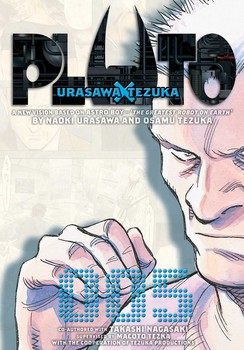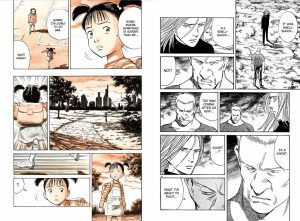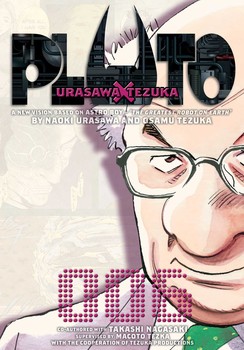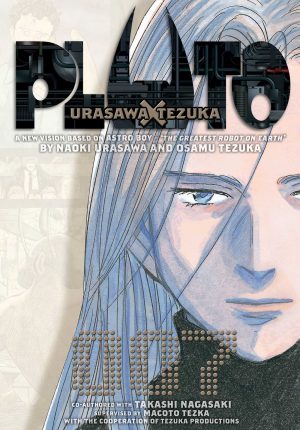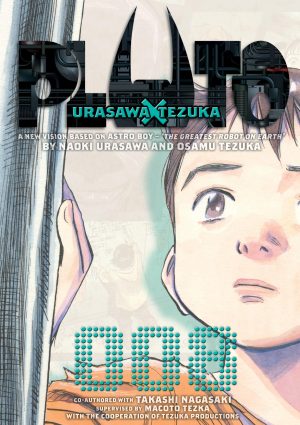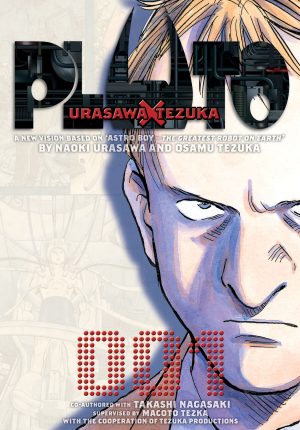Review by Woodrow Phoenix
Volume five of Pluto sees Naoki Urasawa and co-writer Takashi Nagasaki’s story step up another level. After Vol. 4 not many members of the Bora Survey Group remain alive and still there seems to be no way the deadly force destroying them all can even be identified, let alone contained. Detective Gesicht has been assigned to protect the life of Adolf Haas, a man who hates robots so much he is part of a dangerous anti-robot faction, and who is also obsessed with the idea that Gesicht is responsible for his brother’s death. The irony of their situation is not lost on either of them, and is brought into further relief by Hass’ wife. “…even IF Gesicht killed someone,” she tells him, “I don’t like to say this… But your brother deserved to die. The uncountable crimes he committed … the things he did to robots made chills run down my spine… Just thinking about them put a pain in my chest…”
Heracles, the ultimate robot wrestling champion of the WKRR, never got to face off against Brando, his colleague and opponent from the ESKRR, to determine who would be the ultimate champion. However, he thinks his war experience will give him the edge when it comes to a match-up against the force that destroyed Brando and the others. And as more details of the scale and devastation of the 39th Central Asian Conflict emerge, we see a military tribunal bringing to trial one of the key combatants.
The invasion of Iraq by the United States-led coalition that led to war from 2003 to 2011 has arguably had a corrupting and destabilising influence on our whole world. Urasawa and Nagasaki have woven their outrage at this terrible event in recent history into Osamu Tezuka’s original plot for his story The Greatest Robot on Earth. The result intelligently and bleakly examines the worst impulses of humankind. The USA is here renamed Thracia, Iraq is the Persian Kingdom of Central Asia, and when Thracia asserts that Persian King Darius XIV is hiding “robots of mass destruction”, the Bora Study Group (who are the equivalent of United Nations inspectors) go on a fact-finding investigation in the Persian Kingdom. The palace of King Darius XIV hides a chillingly huge graveyard of broken robots beneath its grounds, but no weapons. However, Thracia and its allies – including Mont Blanc, North#2, Brando, and Heracles – attack anyway. Persia is decimated.
All participants in this unjust war, robot and human alike, are haunted by trauma and guilt, and the moral and ethical questions weighing heavily on them from their participation create a charged atmosphere that infuses this book with compelling emotional density. Urasawa’s marvellous staging and drawing makes every scene resonate with his skill at depicting the enormous range of dynamic, harrowing and challenging experiences every one of his characters has to go through. The action moments are superbly exciting to look at and the quiet scenes just as powerfully effective.
As we wonder how far the war crimes extend, and what else remains to be revealed, another significant figure arrives at the Ministry of Science in Japan. Even the brilliant Professor Ochonamizu is intimidated by the strange genius of Dr Tenma. As they discuss their differing philosophies about A.I., Tenma reveals disturbing information that could be key to unravelling the identity of the mysterious attacker. Which side is Tenma on? Vol. 6 can’t come soon enough.
